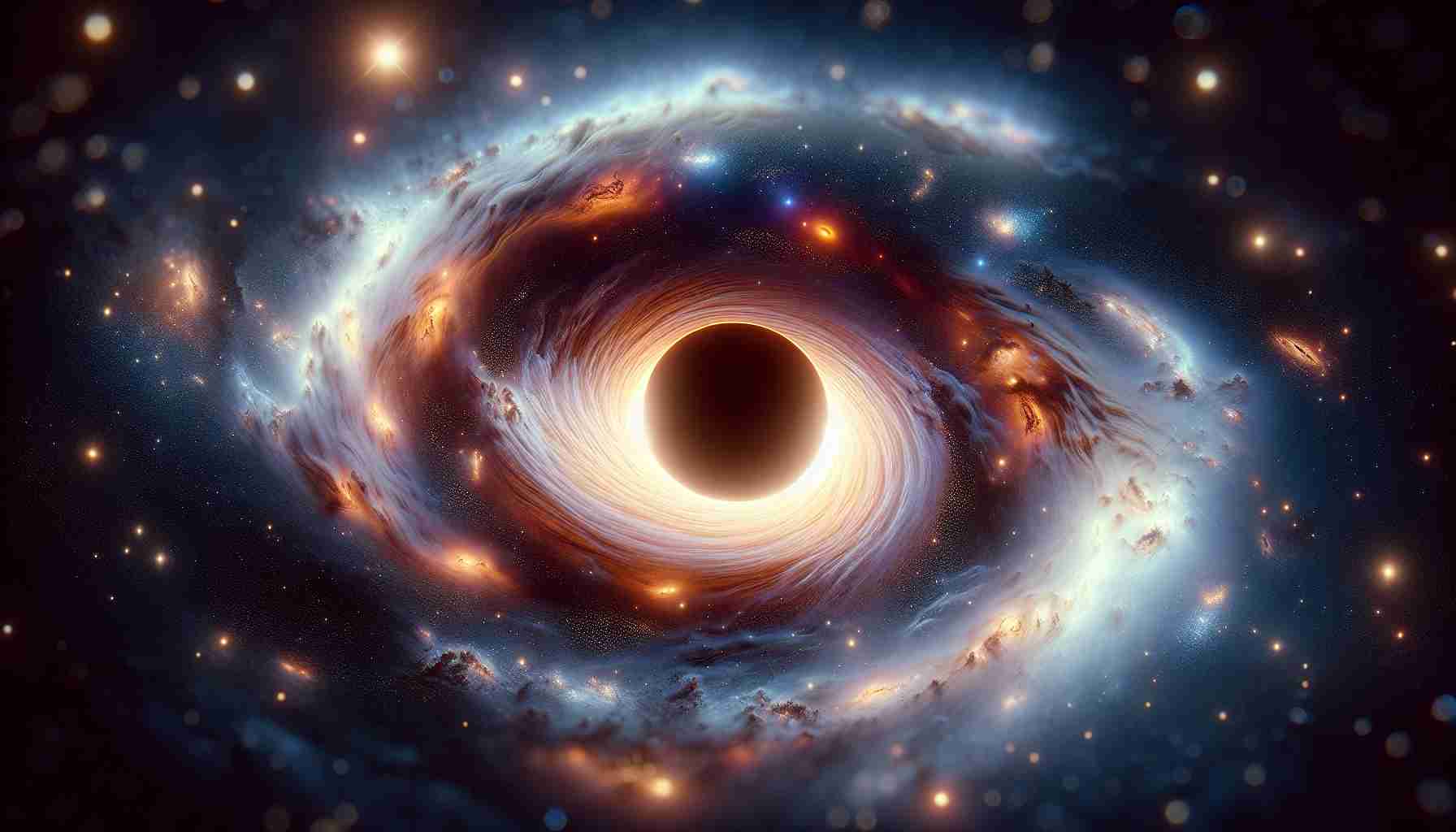A groundbreaking discovery at the heart of the Milky Way is challenging long-held beliefs about black holes and their destructive nature. An international team of researchers has identified a binary star system orbiting dangerously close to Sagittarius A, the supermassive black hole at our galaxy’s core.
Traditionally, it was thought that the immense gravitational forces around black holes made it almost impossible for stellar systems to remain stable, yet this discovery is rewriting that narrative. Using the European Southern Observatory’s Very Large Telescope, scientists observed two stars closely bound together in a particularly dense stellar cluster surrounding Sagittarius A.
This binary star system, just 2.7 million years old, reveals fascinating insights into how stars might endure in such extreme gravitational environments. The study indicates that these young stars could eventually merge due to Sagittarius A‘s gravitational pull, which makes their observation even more crucial for scientists.
Furthermore, this revelation raises tantalizing questions about the existence of planets that could potentially form around these stars, as children of the cosmos yet untouched by the black hole’s presumed destructive tendencies. The researchers stress that further investigations could illuminate the true complexity of star and planet formation in the vicinity of supermassive black holes.
This astonishing finding was detailed in Nature Communications, unveiling a universe far more intricate than previously imagined.
New Insights into Stellar Systems Near Black Holes: A Profound Breakthrough in Astronomy
Understanding the Complexity of Binary Star Systems Near Sagittarius A
A recent groundbreaking discovery at the center of the Milky Way is reshaping our understanding of black holes, specifically regarding their impact on surrounding stellar systems. Researchers using the European Southern Observatory’s Very Large Telescope have identified a binary star system that challenges the long-held belief that the gravitational pull of supermassive black holes inevitably leads to the destruction of nearby stars.
Key Features of the Discovery
– Binary Star System: The discovered binary system consists of two stars that are closely bound together, located in a dense stellar cluster surrounding Sagittarius A, the Milky Way’s supermassive black hole.
– Age and Formation: The stars in this binary system are relatively young, estimated to be only about 2.7 million years old. This suggests that stellar systems can stabilize in environments previously thought to be dominated by gravitational chaos.
– Potential Star Merging: The close proximity to Sagittarius A indicates that these stars could eventually merge under the influence of the black hole’s gravity, opening new avenues for research on stellar evolution in extreme conditions.
Implications for Planet Formation
One of the more intriguing implications of this discovery is the potential for planets to form around these young stars. The nature of the immediate environment around black holes has raised questions about the viability of planetary systems, but this binary system shines a light on the possibility that planets may exist without falling victim to the black hole’s gravitational might.
Pros and Cons of Stellar Systems Near Black Holes
Pros:
– Complex Interactions: The presence of stable binary systems near black holes could lead to more complex interactions and dynamics in stellar formation.
– Potential for New Discoveries: The existence of these stars may indicate that many other stellar systems could also exist in stable orbits around black holes, waiting to be discovered.
Cons:
– Risks of Instability: Although currently stable, the long-term fate of such stars remains uncertain. The gravitational influence of a black hole could alter their orbits dramatically over time.
– Challenges in Observation: The dense regions surrounding supermassive black holes are difficult to study, and further research is needed to understand the complexities involved.
Future Research Directions
Researchers emphasize the necessity for ongoing studies to fully understand star and planet formation near supermassive black holes. This discovery has opened a new frontier in astronomy and has potential implications for our understanding of galactic evolution and the conditions that support planetary systems.
Market Analysis and Trends in Astrophysical Research
As discoveries like this unfold, the field of astrophysics is rapidly evolving, with increased interest in the dynamics of black holes and their effect on nearby celestial objects. The findings may drive funding and focus toward observational technologies aimed at exploring the uncharted regions of our galaxy.
Conclusion
This finding, published in Nature Communications, invites both awe and curiosity, revealing layers of complexity in our cosmic neighborhood previously thought impossible. As researchers delve deeper into the mysteries surrounding black holes, we may indeed reassess our understanding of the universe and our place within it.
For more fascinating insights into astrophysics and discoveries, visit Nature.

















